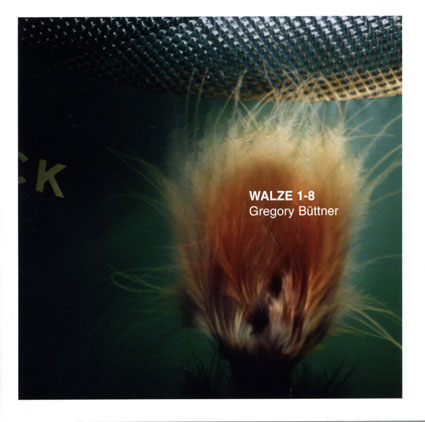Gregory BüttnerWALZE 1 - 8Walze 1 05´01´´
Walze 2 05´53´´
Walze 3 08´50´´
Walze 4 03´58´´
Walze 5 14´15´´
Walze 6 04´03´´
Walze 7 08´33´´
Walze 8 04´58´´
Total playing time: 56:40 min
Many thanks to the Ethnological Museum Berlin, Department Musicethnology, especially to Albrecht Wiedmann.
Thanks to Guy Saldanha for translation.
About the record:
"The source material of the compositions are historical recordings made onwax cylinders (German: "Walze") from the archive of the Ethnological Museumin Berlin. The recordings were all made at the beginning of the last centuryin different parts of the world. For each of my eight pieces I processed thesounds and noises of one wax cylinder using a computer, sometimes modulatingthem with sine waves (Walzen 3, 4 and 8), combining them to newcompositions.
I was interested in the interplay of recorded "memory", imagination (whosang/played what where and why?) and the disintegration of the informationby the material (background noise, technical faults, decay), the fading ofsemiotic contexts and lastly in my electronic processing. My method was tocontrast and integrate the sound of the wax cylinders and the transportedaudio content.
The recording and storing of immaterial "audio information" made me curiousand inspired me to work with the material. Like old photographs that slowlyfade, the "audio information" disappears or changes either by decay of themedium or on the semiotic level by the ignorance of the listener who, theolder the material becomes, only can imagine how the person whose song ormusic is played posthumously, thought or lived. In his essay "Die helleKammer" (English title: "Camera Lucida") Roland Barthes describes theparadox situation in the coincidence of past and present which takes placewhen looking at old photos. A similar effect is achieved through the renewedsounding of recorded voices from the past. Of course this holds true withany recording, but is intensified by the old age of the wax cylinderrecordings, after all it is likely that all the people that created themusic are dead. The impression of times past is increased by technicaltraces like crackling, rustling, etc. comparable to the changing of colors,folds, scratches and spots on old photographs."
Gregory Büttner
www.gregorybuettner.de
